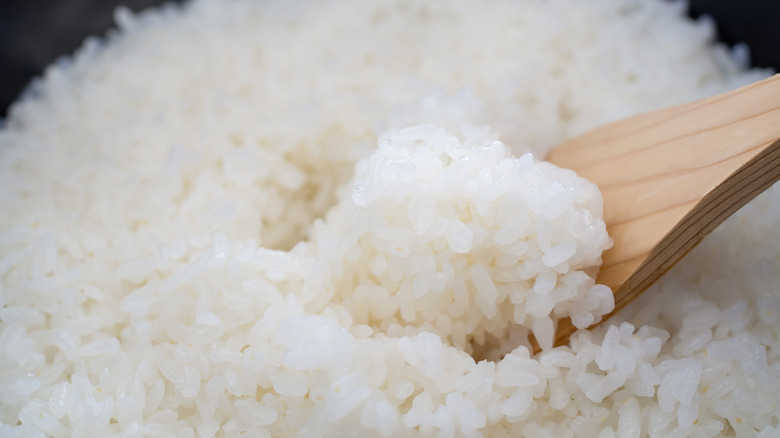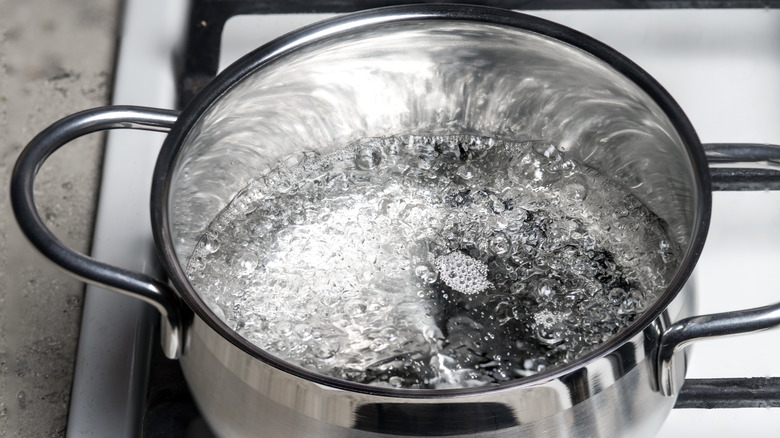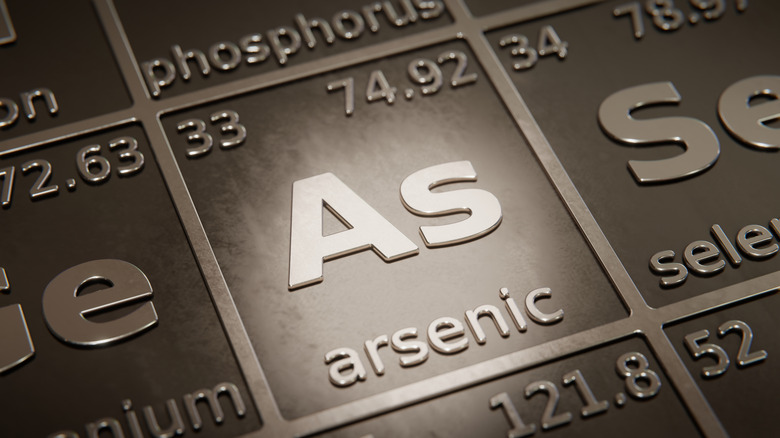Cooking Rice Like Pasta: Sacrilege Or Useful Hack?
For such a simple and widely eaten food, rice isn't always the easiest thing to make. For those who don't have a rice cooker, mastering the perfect pot of fluffy, individually defined rice can be a frustrating process of trial and error. Maybe you forgot to rinse the rice beforehand and the end result is gummy. Maybe you walked away from the stove for too long and came back to dried-out or burnt grains. Or maybe your rice always comes out underdone and you're not sure why.
The internet is full of methods that claim to safeguard against each of these issues. Some of them might prove successful, but they'll also likely involve adding more steps to your process. "Why can't I just cook rice like pasta?" you might ask yourself in the throws of a rice-making disaster. Well, some say you can totally cook rice in a pot of boiling water, with no specific liquid measurements required.
Boiling rice saves time, energy, and some dishes
Instead of measuring out a two-to-one ratio of water to grain the next time you decide to make rice, simply fill a large pot with water and bring it to a boil. Once it's rolling, add your rice and reduce the heat to a simmer. Cook it for about five minutes less than it says on the package instructions, stirring it occasionally until it's cooked through.
Then, drain the rice, return it to the pot, and give it another minute over low heat. Gently stir it until any excess water is absorbed, or let the rice drain in a colander for a minute or two until it's dried off and ready to plate. According to Jennifer Pallian, rice-boiling devotee and the recipe developer behind Foodess, adding two teaspoons of kosher salt for every quart of water is the key to rice that's "perfectly seasoned."
On a recent Reddit board, one user confirmed that boiling rice "results in light, fluffy grains that don't stick together." Another wrote that boiled rice won't "come out soggy" so long as you "let the rice steam off after (or continue to cook it like in a biryani)." A third user said they've been boiling rice for 15 years and the method yields results that are "perfect every time."
Let's talk about arsenic in rice
Did you know that your rice might contain trace amounts of arsenic? Research published by the National Library of Medicine shows that rice fields are likely to soak up the toxic chemical, which occurs naturally in soil, sediment, and groundwater. A little won't hurt you, but large intakes of arsenic can lead to all sorts of long-term health problems.
This brings us to yet another benefit of boiling rice instead of steaming it. According to Michael Greger M.D., a Fellow of the American College of Legal Medicine, opting for a "high water-to-rice ratio" can help reduce arsenic levels in rice by up to 60%. Greger adds that some public water supplies also have higher-than-recommended levels of arsenic. This is all the more reason to choose the method that involves washing most of that rice water down the drain. And if you're worried about carbohydrates, you'll be glad to know that discarding the water also reduces rice's starch content.
A University of Sheffield study published by the Science of the Total Environment found that the best way to strip rice of its arsenic while maintaining its natural nutrients is by using the "PBA method." Instead of boiling the rice until it's completely cooked, the method involves parboiling it for five minutes, draining it, refreshing the water, and finishing it off over low heat.


